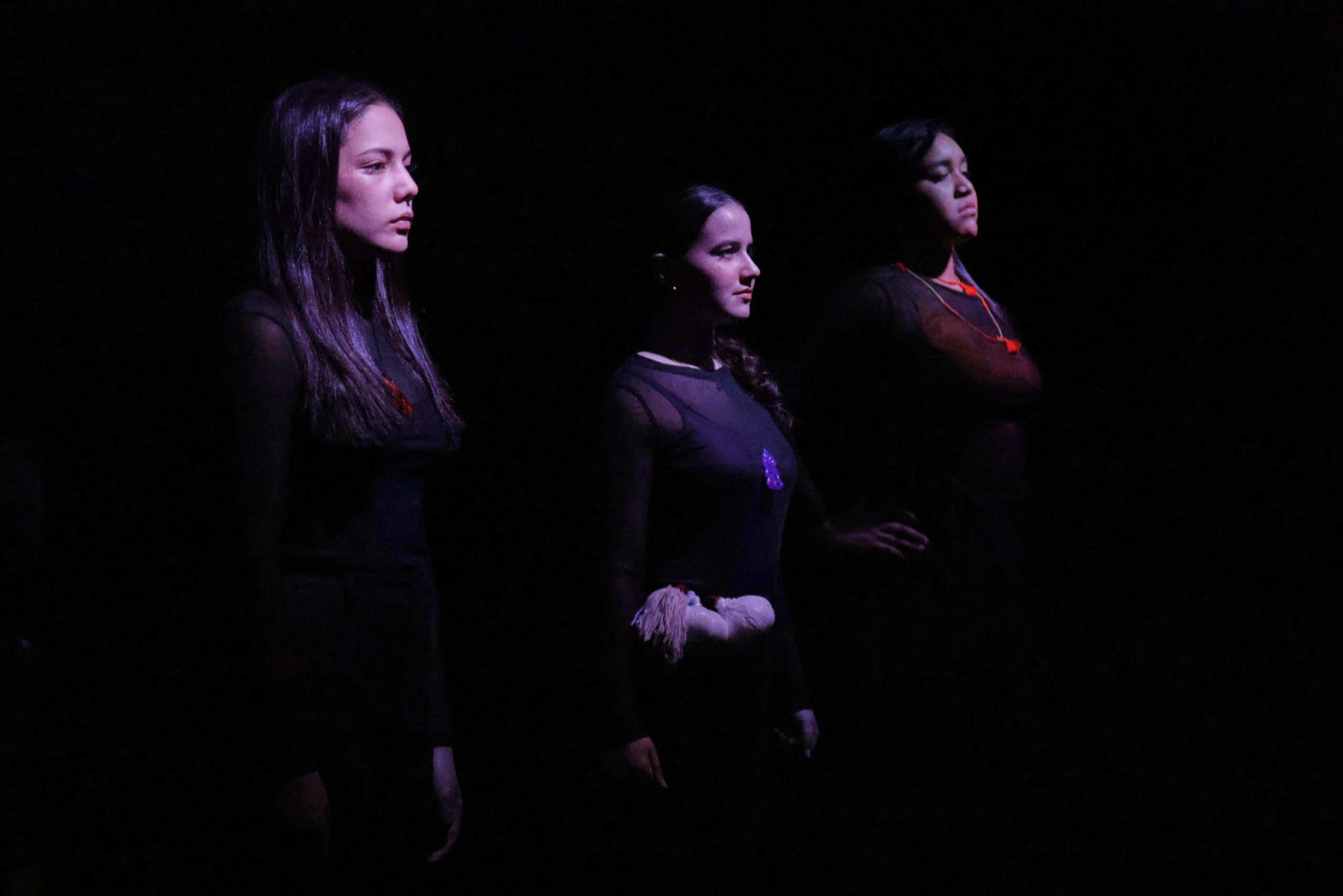Review: Hine Te Rēhia
It’s a chilly winter day in Pōneke, but the joy from the audience surrounding me and my theatre-going companion could warm the most cynical of souls. We’re here to see Hine Te Rēhia, a gorgeous piece of theatre by Auckland-based Tutatara Collective, and the mood in the room is unbelievably high.
Forgive my lack of piecemeal specifics, my notes written on my arm were obliterated by the feverish joy of this theatrical experience, but I can give you an overall vibe.
Hine Te Rēhia is an unbelievably beautiful and powerful theatrical work. Even from the moment of entering the theatre, where we’re greeted by a korowai adorned carving of Hine Te Rēhia (sculpted by Hāhona Ormsby), and set dressing that speaks to worlds and lives beyond the play – wall hangings, framed photos, a guitar and a comfy seat, we are held in rapture by what this theatrical piece of art presents.
Our six performers, young BIPOC women from a variety of locales, give us just over an hour of witty and talented performance. From haka, to poi, spoken word, singing, sketch and dance, these six wahine perform with unbelievable power, and the theatre ignites in applause and cheers. I’ve never seen BATS so loud, but that’s the power of these performers.
Told in vignettes wrapped around Hine Te Rēhia and other Māori goddesses, our performers tell us stories about family, drag up and dick about on stage as lads, bob around as sea creatures, and build memories of home.
One vignette that particularly moves me is when a watermelon is gently carried onto stage and placed at the feet of Hine Te Rēhia; the goddess providing recognisation of the ongoing genocide in Palestine, and protection for the Palestinian people too. It’s a quiet moment but a moving one, and I’m stuck with the image for long after the show ends.
Hine Te Rēhia is a show that feels utterly connected to the world around it. There’s moments within that clearly have been devised or redevised within weeks of the show’s opening – a piece of spoken word about the recent “man vs bear” meme is funny and poignant – and that connection spans not just pop culture but the world between the performers and the one beyond.
It’s a show that feels built from not just modernity, but the stories and ties that bind the performers’ pasts, cultures and individual lives; this would not be a work that you could pass onto strangers to perform, it’s the personal storytelling that makes the piece blossom such on stage, and the talent of the performers that make it grow.
Hine Te Rēhia is one of those theatrical works that you come across so very rarely. It’s near word-perfect in its execution, full of utterly talented folk, deeply charming and a piece of performance that will stick with you long after you see it. I am both envious and emboldened by the performative space that’s been created in this theatre, and I urge you to catch this show if you ever get the chance.
It’s one of the best pieces of theatre I’ve ever seen.

